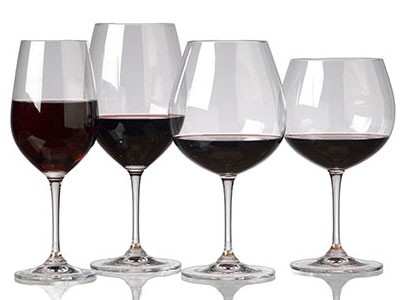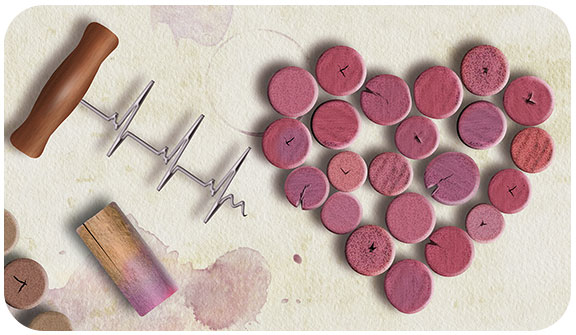

A Quick Guide To Red Wine Types
People around the world have enjoyed red wine for thousands of years, savoring the unique flavors made from red or black grapes. Each red wine type offers distinctive aromas, tastes, and textures, catering to a range of palates. By understanding the different types, you can select the perfect red wine to suit your taste, food pairing, or special occasion.
What are Red Wine Types?
“Red wine types” refer to various categories based on the grape varieties used in winemaking. Each type’s flavor, body, tannins, and aroma can differ significantly due to specific winemaking techniques and the region where winemakers grow the grapes. Factors like climate, soil, and production methods also shape the characteristics of each wine type.
Popular Red Wine Types You Should Know
Explore some of the most well-known red wine types and discover what makes each one special.
Cabernet Sauvignon:
Winemakers produce Cabernet Sauvignon, one of the world’s most popular red wines, using bold-flavored, full-bodied grapes. You’ll often taste notes of blackcurrant, blackberry, and hints of spice. Many winemakers age it in oak barrels, adding flavors of vanilla, cedar, or tobacco. Pair it with grilled meats and hearty dishes for the best experience.
Merlot
Merlot’s softer and fruitier nature appeals to a wide range of wine drinkers. It typically features flavors of plum, cherry, and chocolate, along with subtle herbal notes. Its smooth tannins make it perfect for pairing with roasted chicken, pasta, and lighter meat dishes.
Pinot Noir
Known for its light body and delicate flavors, Pinot Noir often reveals notes of red fruits like strawberry, raspberry, and cherry. Its lower tannin levels and versatile character make it suitable for dishes such as duck, chicken, and salmon.
Syrah / Shiraz
Syrah, or Shiraz, offers a full-bodied, bold taste with flavors of dark fruits, black pepper, and sometimes smoky or meaty hints. The higher alcohol content and intense profile make it an excellent match for roasted meats, barbecue, and spicy dishes.
Zinfandel
This robust red wine features bold flavors of blackberry, cherry, and spices. It often has a jammy quality and a peppery finish, which pairs well with spicy foods, barbecue, and rich pasta sauces.
Malbec
Widely associated with Argentina, Malbec boasts a rich, full-bodied profile with flavors of blackberry, plum, and black cherry. Many winemakers add hints of cocoa, leather, or spice. This red wine pairs beautifully with grilled meats and spicy cuisine.
Tempranillo
Spanish winemakers use Tempranillo for its savory and complex flavors of dark cherry, dried fig, and tobacco. Oak aging adds earthy notes of leather or spice, making it ideal for pairing with tapas, roasted vegetables, or paella.
Sangiovese
The primary grape in Italian Chianti wines, Sangiovese offers medium to high acidity and firm tannins. Its flavors of red cherry, plum, and tomato complement Italian dishes like pasta with tomato sauce, pizza, and cured meats.
Nebbiolo
Known for prestigious wines like Barolo and Barbaresco, Nebbiolo provides high acidity and strong tannins. Its complex flavors of cherry, rose, leather, and truffle develop further with aging, making it ideal for pairing with rich, savory dishes.
Barbera
Barbera stands out for its bright acidity and soft tannins. This versatile wine presents flavors of red fruits such as cherry, raspberry, and cranberry, pairing well with a range of dishes, from pasta to grilled vegetables.
How Winemakers Classify Red Wine Types
Winemakers categorize red wines based on grape variety, commonly called “varietals.” Each varietal may vary depending on several factors:
Region
The geographical location influences a wine’s flavor, body, and aroma. For example, Cabernet Sauvignon from Napa Valley tastes different from one produced in Bordeaux, France.
Harvest Timing
The time of harvest affects a wine’s sweetness, acidity, and alcohol content. Winemakers who harvest grapes later in the season often produce sweeter, fuller-bodied wines.
Production Techniques
Fermentation, oak aging, blending, and maceration techniques all impact the final taste and aroma of the wine.
Health Benefits of Red Wine Types
Drinking red wine in moderation offers potential health benefits due to its antioxidants, such as resveratrol and polyphenols. These compounds have been linked to heart health and improved circulation. However, you should enjoy red wine in small quantities to avoid negative effects from excessive alcohol consumption.

Red Wines by Boldness
Red wines are often categorized by “boldness,” which is essentially a catchall term to refer to the intensity of flavors. There is not a single quality that equates to “boldness,” but rather it is assessed based on the overall experience of the wine. Therefore, a bolder wine could have higher levels of tannins or higher alcohol content, or may otherwise feature more dramatic flavors.
Light
Lighter wines feature subtle flavors, and are often described using words like smooth, crisp, delicate, and bright. They are also high in acidity and low in alcohol and tannin content. Wines with an alcohol content of 12.5 percent or lower are typically considered light. Examples of light reds commonly include Pinot Noir, Grenache, and Cinsaut. Light reds typically pair well with fatty fish or lean red meats. Some reds may also be described as “medium-light,” which as the term implies, falls somewhere between the boldness of a light and medium-bodied wine.
Medium-bodied
Medium-bodied red wines feature interesting flavor profiles that do not overpower, and are often described using words like balanced, moderate, elegant, and structured. The acidity and tannin content are balanced, and the alcohol content is moderate. Medium-bodied wines will have an alcohol content between 12.5 and 13.5 percent. Examples of medium-bodied reds commonly include Merlot, Nebbiolo, and Tempranillo. They typically pair well with pastas, chicken, and fish.
Full-bodied
Full-bodied wines feature intense flavors, and are often described using words like robust, complex, dramatic, and rich. They are often described as feeling heavy and thick in your mouth. Full-bodied wines are low in acidity and high in alcohol and tannin content. Any wine with an alcohol content of 13.5 percent or higher is considered a full-bodied wine.
Examples of full-bodied reds commonly include Cabernet Sauvignon, Zinfandel, and Syrah. Full-bodied reds typically pair well with rich meats, sharp cheeses, and decadent desserts. Some reds may also be described as “medium-full,” which as the term implies, falls somewhere between the boldness of a medium and full-bodied wine.
What Red Wine Types Should I Use For Cooking
While the exact type of wine that will best suit your recipe depends on the specific recipe and desired outcome, mid-range, medium-bodied reds are typically considered the go-to option for red wines in cooking, as they confer strong flavors without overpowering the dish. The modest level of tannins in medium-bodied reds also prevents bitterness or chalkiness in the final product that may result from high tannin content. Red wines are a popular ingredient in stews, roasts, and decadent chocolate desserts. Popular choices include Cabernet Sauvignon, Merlot, and Pinot Noir.
Frequently Asked Questions about Red Wine Types
What is the most popular types of red wine?
Many consider Cabernet Sauvignon the most popular red wine worldwide because of its bold flavors and versatility.
Which red wine types is best for beginners?
Beginners often enjoy Merlot or Pinot Noir due to their smoother tannins and fruit-forward flavors.
How should you serve red wine?
Most red wines taste best when served slightly below room temperature, around 60-65°F (15-18°C), to bring out their flavors and aromas.


